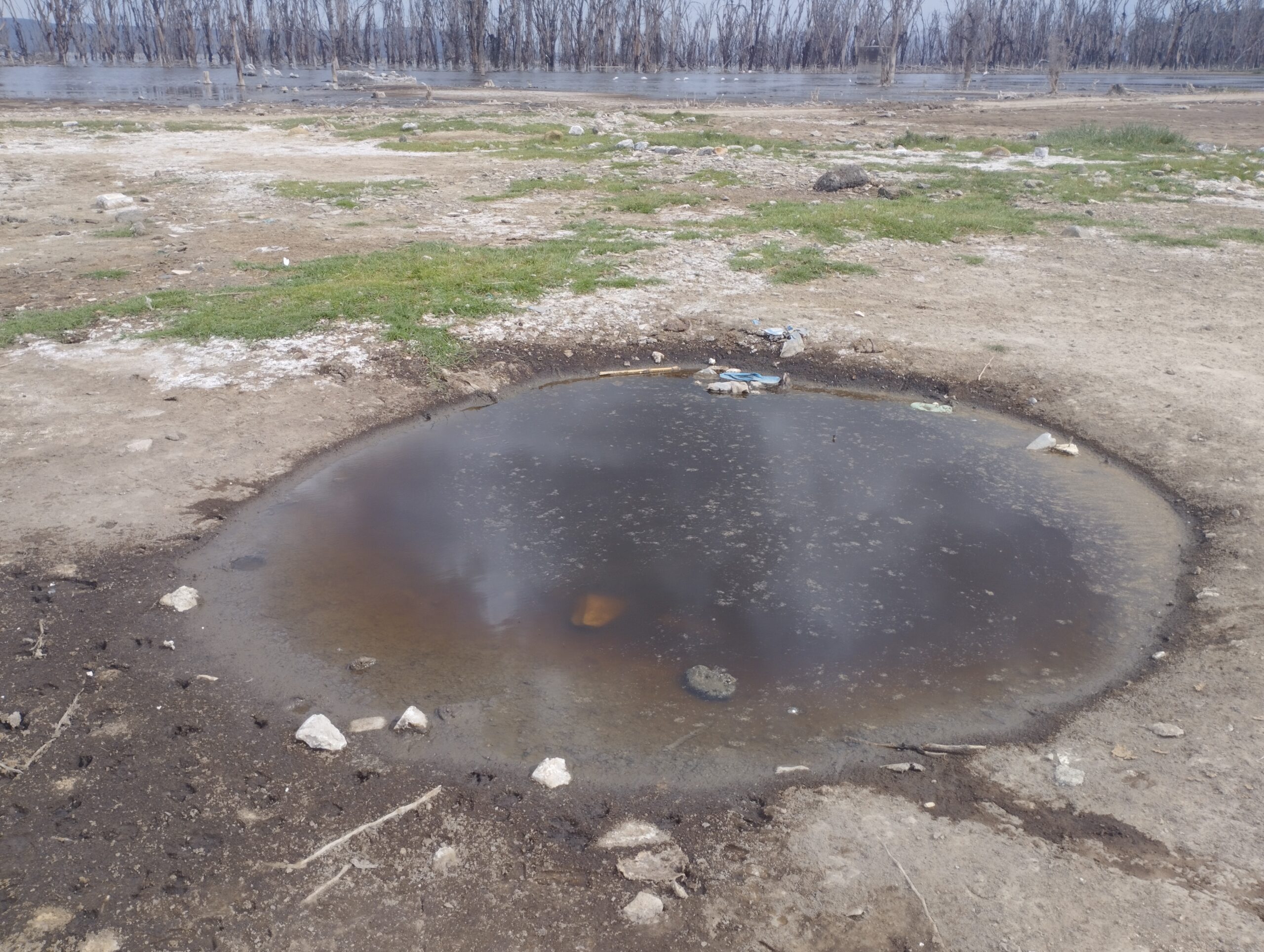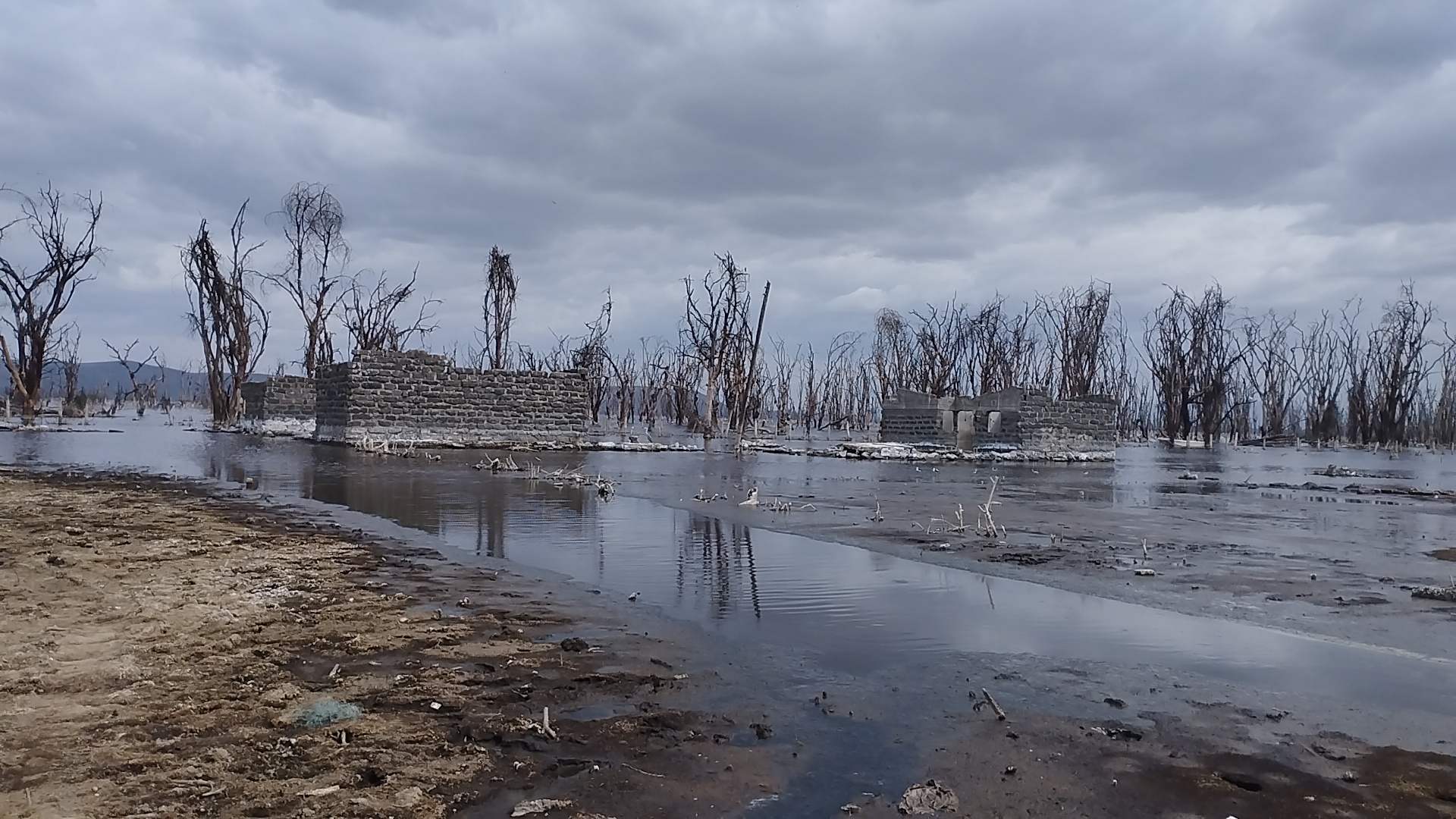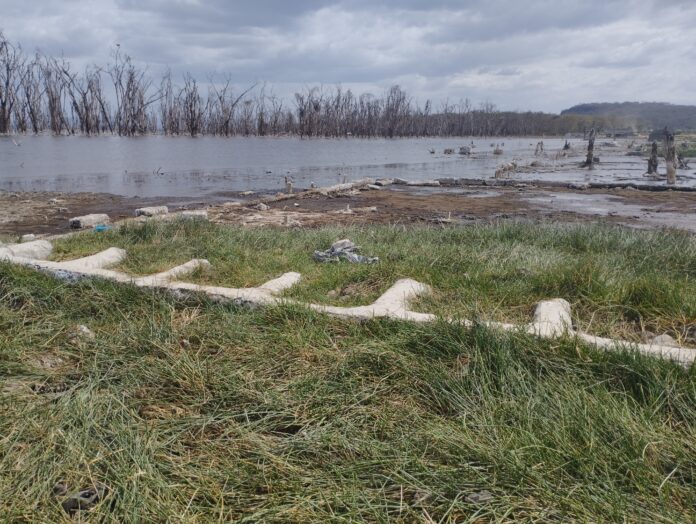By Tabitha Munyiri
Nairobi, Kenya: Communities living adjacent to Rift valley lakes will have to consider relocating to higher areas as researchers anticipate a further rise in lake levels as the long rains begin. Lake Nakuru in Kenya is among the lakes located at the floor of the Great rift valley which has experienced a tremendous rise over the last ten years.
Jackson Raini, an environmental researcher, and Chief Executive Officer at Flamingo Lakes Conservation Network said that with the upcoming rains, the lake is likely to submerge more terrestrial land leading to further losses.
“The peak depth recorded in Lake Nakuru up to sometime last year before the drought was around 8.5 meters. The waters receded by about one meter due to the recent drought. However, with the long rains expected, we expect the lake to rise further by 2 meters pushing it to an estimated 9.5 meters in depth. This means that more settlements will be displaced,” he said.

As millions of Kenyans anticipate the long rains expected between March and May, residents living next to Lake Nakuru in Nakuru County are in a state of unease as they anticipate another flooding episode.
Samuel Ogoti, a father of four, is among those whose land was submerged in 2020, when the lake recorded its highest level yet, forcing him and his family to relocate to higher ground within the same locality.
The lake has almost doubled in size and depth over the last ten years as a result of climate change, resulting in capital expenditures of over Ksh. 160 million for the rehabilitation and replacement of submerged infrastructure at the Lake Nakuru National Park.
“I lost property estimated at 1.7 million shillings and due to the interference, I could not take my children to school during that period. Our lives were halted,” said Ogoti.
As of June 2021, approximately 25 square kilometers had been submerged, increasing the lake’s size from 43 square kilometers to an estimated 68 square kilometers. This represents a 36.8 percent increase in ten years.
“The water table around the lake is supersaturated and therefore a lot of water isn’t lost through seepage. This is highly contributing to the rise in the lake’s levels. According to projections, the lake may rise to cover 82 square kilometers by 2030,” said Raini.
The 2021 Report on Rising Lake Levels and Beaconing of the Highest Water Mark in Lake Nakuru, Kenya, revealed that a total of 677 families were affected from the Barut, Mwariki, and Park View areas. Those affected are yet to get compensation for the losses they incurred.
Esther Njeri was also among those whose land was submerged, forcing her family to relocate away from the lake’s area. She said that she has been thinking of moving back to her land having noted that the lake’s waters were receding.

Raini advised against this move saying that with the rains coming up, the riparian area is likely to increase. “The current drought is only temporary, especially in the rift valley region, and other lakes levels within the region, not just lake Nakuru are also expected to rise,” he said.
With this prediction, he urged county governments to work quickly to resettle residents living within the riparian area in order to avoid the loss of more property and risks associated with flooding.
Climate financing continues to become a challenge among African countries which are the hardest hit by the effects of climate change. This has made it hard for governments to compensate victims of climate-related calamities.
“After the flooding, we could see many government officials around the lake. We were even promised compensation which we are yet to receive. If we were to be compensated, that would greatly help us out; however, there have been empty promises for the last three years. I don’t think we will get anything” Njeri said.
.














